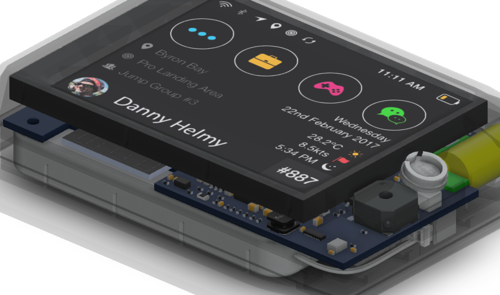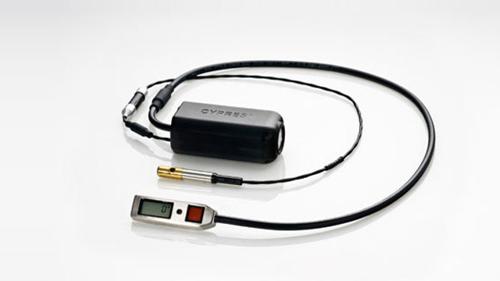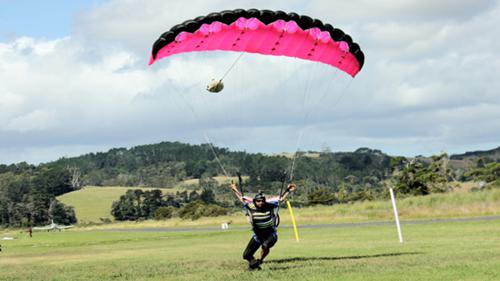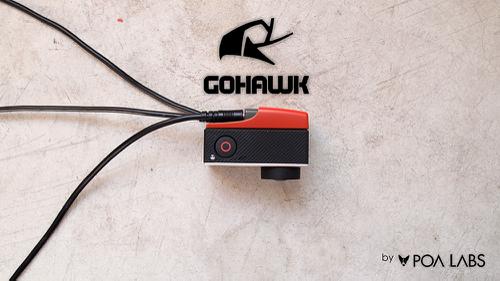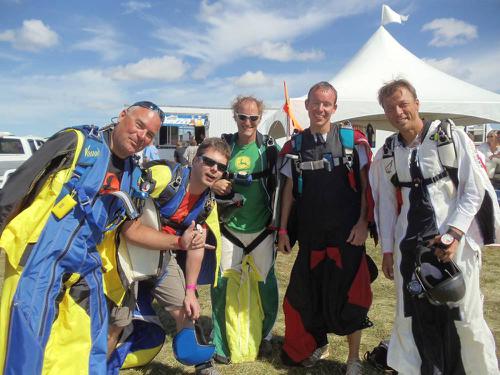Brent Chandler Discusses Dekunu's Feature Filled Altimeter
Australian start-up Dekunu Technologies have spent much of 2017 teasing the release of a new breed of altimeter. A cool, but somewhat cryptic marketing campaign has generated a great deal of excitement but so far is light on actual details. Why? Behind the project is Brent Chandler - entrepreneur, skydiver and life-long coder. He joins us to shed a little light on the Dekunu project - how it got started, and where it is going.
Can you begin with a little bit of personal background?
“Without going into too much detail, I created a technology-based business within the hospitality industry in Australia, and over the last nine or ten years developed it to the point where it now runs itself. Once I reached the point where I had successfully built myself out of the company I found myself looking for something that ticked all the right boxes - a tech project that I was passionate about and would allow me to retain a lot of freedom to travel and skydive. After about six-months of conceptualising various different ideas, Dekunu stood out as the obvious choice. I have been passionate about technology my whole life, and although I have always struggled to ever learn say - a second spoken language, computer languages stick with me. For me programming is logical and makes sense. I can see it.”
What were the first steps in making this idea into a real project?
“Hardware technology. It was a tech genre I had never experienced before. Tech for me had always been software, writing code onto a screen - whereas with Dekunu we are creating concepts, schematics and then a physical product. This was super exciting for me to sink my teeth into, but admittedly intimidating as well. Before we got started I had little idea about what was involved. We got some electronics kits, and a year ago I made the first prototype. The first four prototypes were really just experiments in my understanding. We were using off-the-shelf components and writing code to get them to talk to each other. One of the biggest hurdles was when we moved on to writing our own complete board - where every wire, component, capacitor, resistor and transistor needed to be meticulously arranged. I wasn’t aware of how complicated that process was going to be - even now most days I will have hour-long conversations with our hardware engineers about the placement of one little half-millimetre sized component.”
What challenges have you faced creating hardware that needs to work reliably in a skydiving environment?
“Earlier in the prototyping process we didn’t have much consideration for things like operating environments - large temperature differentials, humidity requirements, impact resistance or anything like that. We just wanted it to work and then figure out where it was going to break. Being meticulous through all the various versions means that now we can very be specific about our requirements. We need to know what happens if someone leaves their device in the front of the plane under the engine bay and it gets to seventy degrees, or if it gets left outside somewhere below freezing. We have to be very thorough. The devices currently have 285 individual components - if any one of them goes wrong it could potentially harm someone. For Prototype 10 we did a lot of testing ourselves. All of the devices were jumped and the data compared before they were sent off to our team of testers and friends around the world - our Dekunu ambassadors. We decided to run the ambassador programme for a couple of reasons - it is a great marketing opportunity to have influential flyers from around the world running our equipment, but the vital part is exposure to testing environments that highlight things we simply cannot learn from jumping in Byron Bay every day. We have the luxury of being able to make mistakes with the prototypes, but cannot once we start selling the devices. We receive a lot of emails from people voicing their frustration that they cannot yet get their hands on one, and sure - we could capitalise on the engaged audience but to do so too early could very well result in shooting ourselves in the foot.”
Everyone wants to know what it does. What does it do?
“Without revealing some big, soon to be announced, functionality, the device is going to be all encompassing due to the infrastructure we are creating. Imagine that you come down from your jump and have not plugged into a computer or anything and you have access to all the information it has recorded - a lot of which at the moment without a SmartAlti is dominated by guess work, ego and bias. People will be able to answer a lot of questions with complete accuracy and answer them in the landing area. What was the exit separation? Exactly how hard was that opening? Why did people land off? What was the wind doing? Did we track in the right place? Did we open too close to each other? We want it to be so intuitive and connected that it works seamlessly with every type of device. You don’t have to be plugged into a computer for hours afterwards - you can be in the bar with your friends and have the whole experience on your phone. Also not just your information - a single dot on a screen. All your mates on the jump as well. The entire experience.
For many things in skydiving, simple is best. Does a device that is packed with features run the risk of over complicating things to the point of distraction?
“This is something we have discussed at length. No matter what happens - as soon as you jump it switches mode and there is nothing you can do on the device except see the altitude on a massive screen. At the moment the device enters a Plane Mode showing heading, ground speed and some other neat features like simple safety tips and reminders on the way to altitude such as when to remove your restraint, check your gear, get a pin check - things like that. We also have a version of the software that includes a student mode - which removes any unnecessary complications. Student mode could, for example, include the important things they need to remember about their jump plan. We are working on making this the best possible device for all users. We’ve saved the complications for our number crunching servers behind the scenes”
Brent is more guarded about some of the far reaching potential that fully networked, intelligent altimeters might have for the future of skydiving - sensibly circling back to the importance of the unit itself being success before the big plans happen.
“We have done an enormous amount of work on the backend and the visualisation systems - this data that people will have access to is going to allow them to learn so much more from their jumps. It is important for everything to be as intuitive as possible - if we create a system that is good but time-consuming for people to use, then they are not going to use it. We haven’t created this just for the technologically adept - we want it to be the default choice for all skydivers and not just those who like gadgets and want their altimeter to have a touchscreen. Our core ethos is about how this is going to bring more awareness to the sport of skydiving. More data, more transparency - that is really the focus. We see things progressing to the point where, such as with an AAD - if you don’t have a networked altimeter then you are not jumping. The idea being that this will become as normalised as owning any simple altimeter in the way you are required to now - the pricing is not much different, and the information will be so valuable that this is absolutely the way forward for the sport.”
The more elaborate details of what the Dekunu device does, and could do, remain to be seen and proven - but anyone who uses a modern phone is able to imagine the prospective gains that one of our mandatory pieces of safety gear becoming fully networked and similarly sophisticated could mean. Within recent history mobile technology has profoundly altered the way our daily lives operate, and transporting this potential into the skydiving environment is a very exciting prospect that could well have an amazing effect on how well we do what we do - how quickly we learn and how safe we all are. Brent and the Dekunu team are hard at work turning these ideas into reality.

